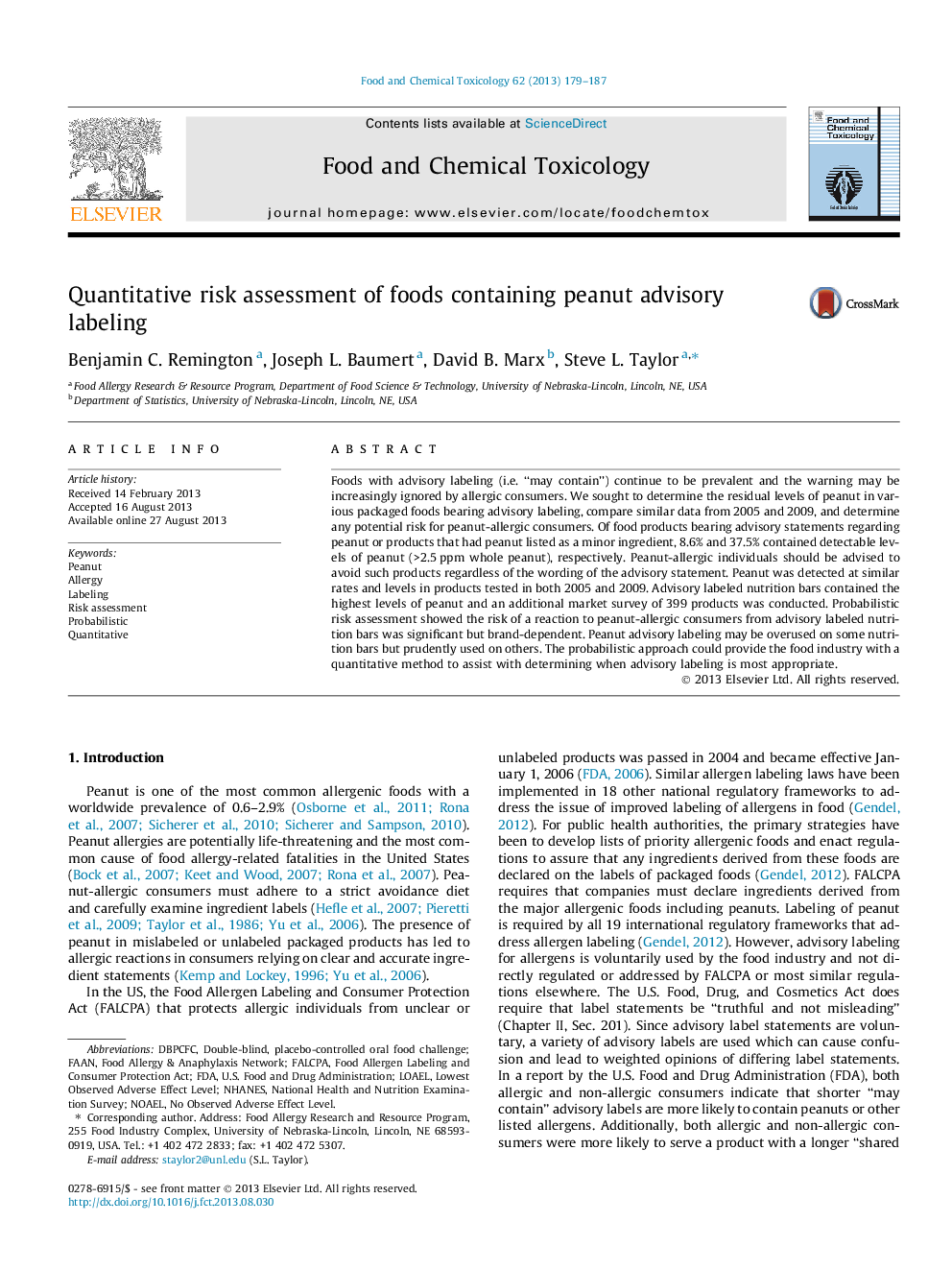| Article ID | Journal | Published Year | Pages | File Type |
|---|---|---|---|---|
| 5850321 | Food and Chemical Toxicology | 2013 | 9 Pages |
Abstract
Foods with advisory labeling (i.e. “may contain”) continue to be prevalent and the warning may be increasingly ignored by allergic consumers. We sought to determine the residual levels of peanut in various packaged foods bearing advisory labeling, compare similar data from 2005 and 2009, and determine any potential risk for peanut-allergic consumers. Of food products bearing advisory statements regarding peanut or products that had peanut listed as a minor ingredient, 8.6% and 37.5% contained detectable levels of peanut (>2.5Â ppm whole peanut), respectively. Peanut-allergic individuals should be advised to avoid such products regardless of the wording of the advisory statement. Peanut was detected at similar rates and levels in products tested in both 2005 and 2009. Advisory labeled nutrition bars contained the highest levels of peanut and an additional market survey of 399 products was conducted. Probabilistic risk assessment showed the risk of a reaction to peanut-allergic consumers from advisory labeled nutrition bars was significant but brand-dependent. Peanut advisory labeling may be overused on some nutrition bars but prudently used on others. The probabilistic approach could provide the food industry with a quantitative method to assist with determining when advisory labeling is most appropriate.
Keywords
Related Topics
Life Sciences
Agricultural and Biological Sciences
Food Science
Authors
Benjamin C. Remington, Joseph L. Baumert, David B. Marx, Steve L. Taylor,
